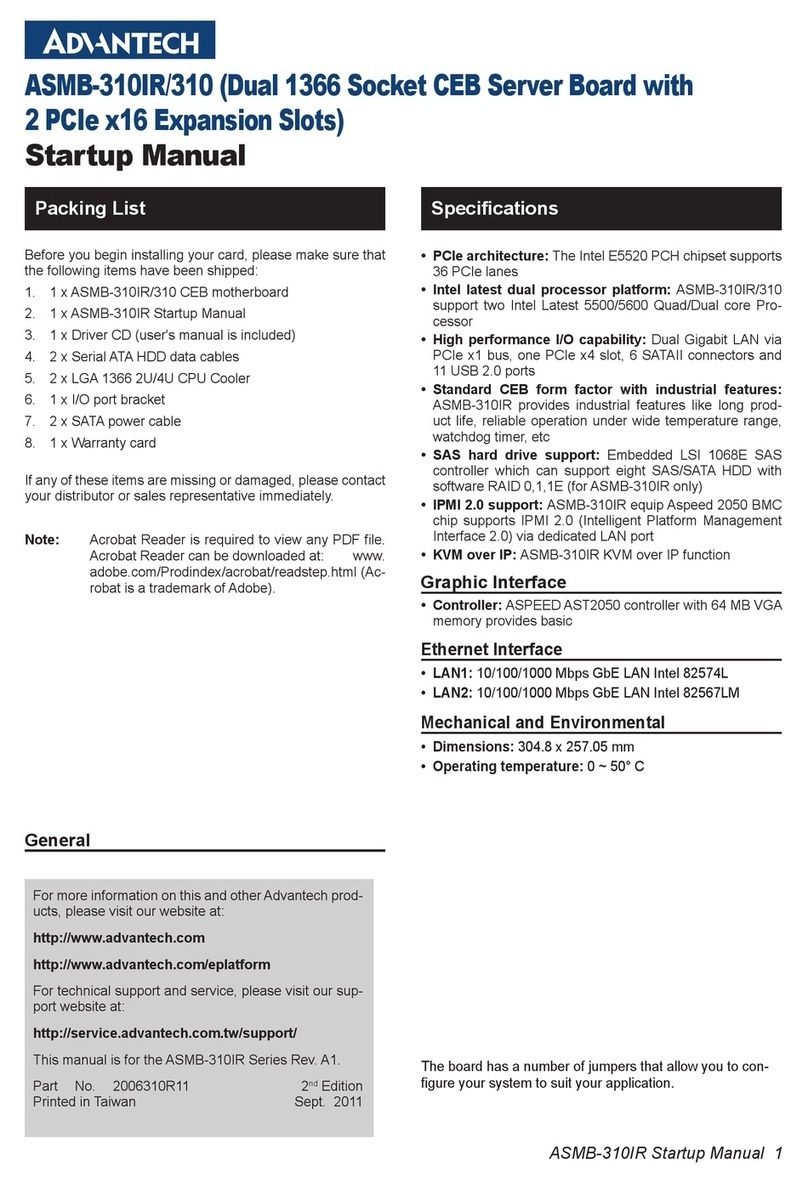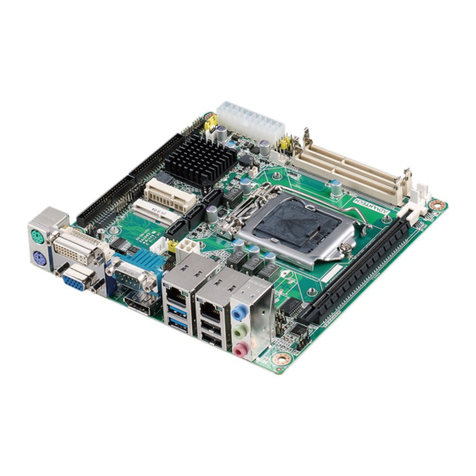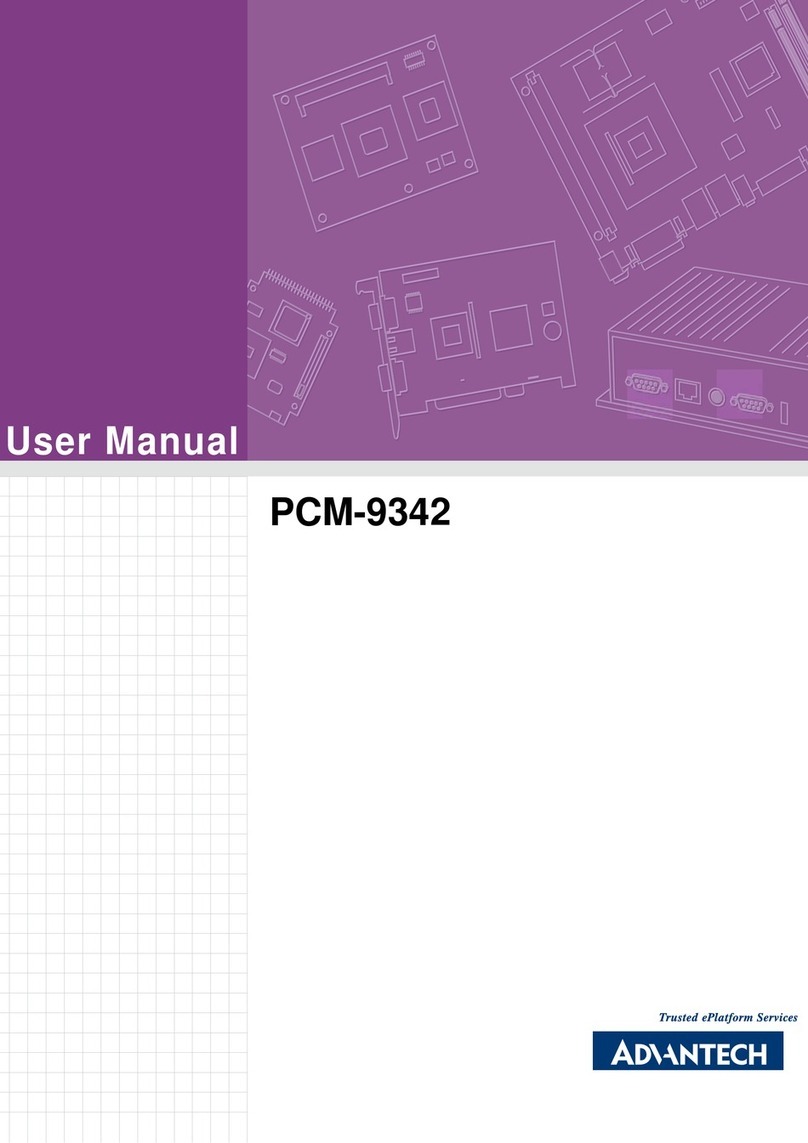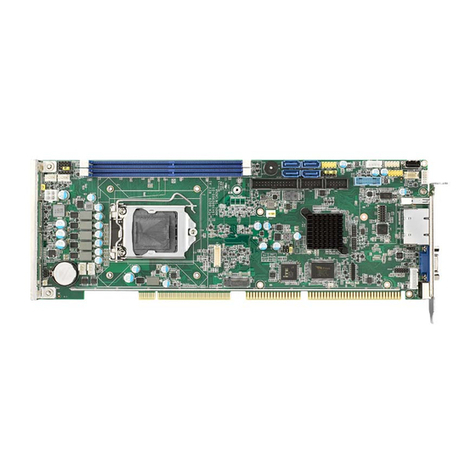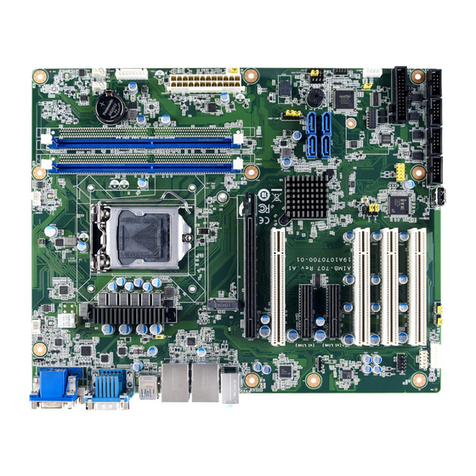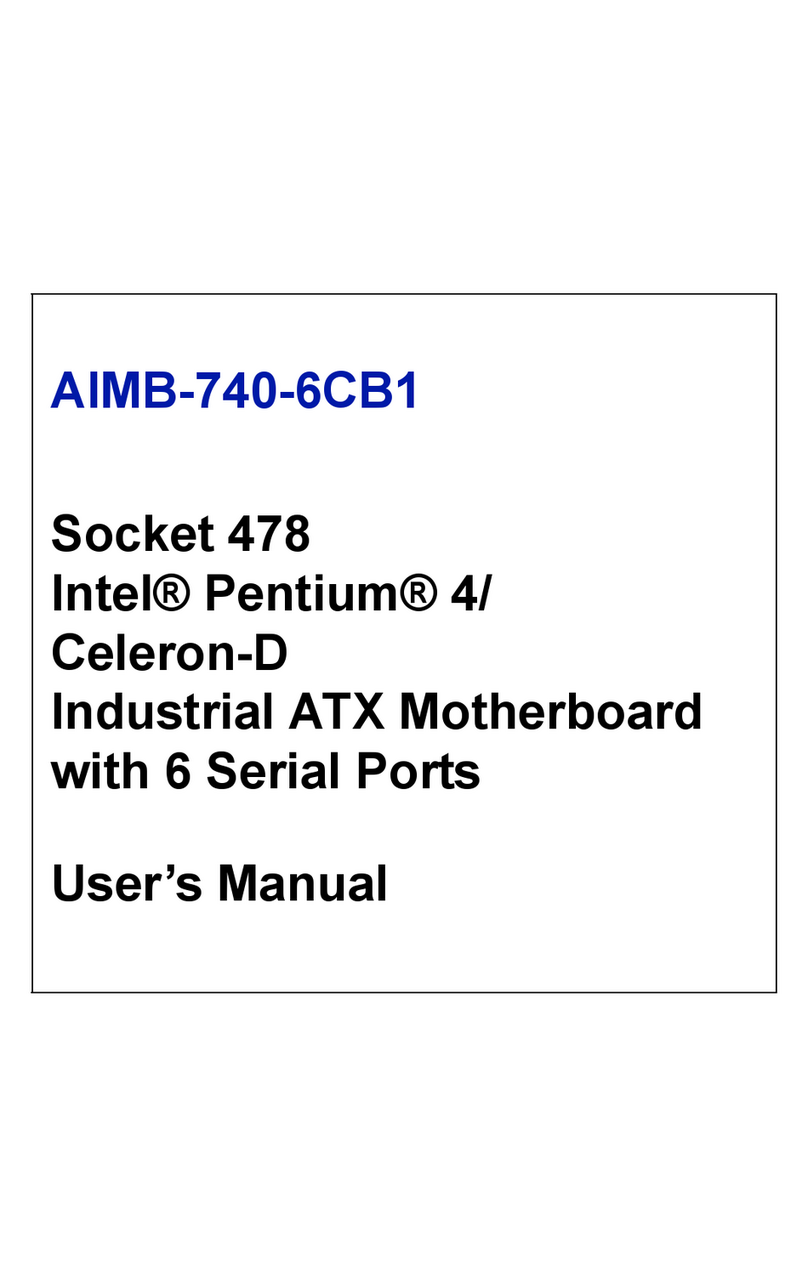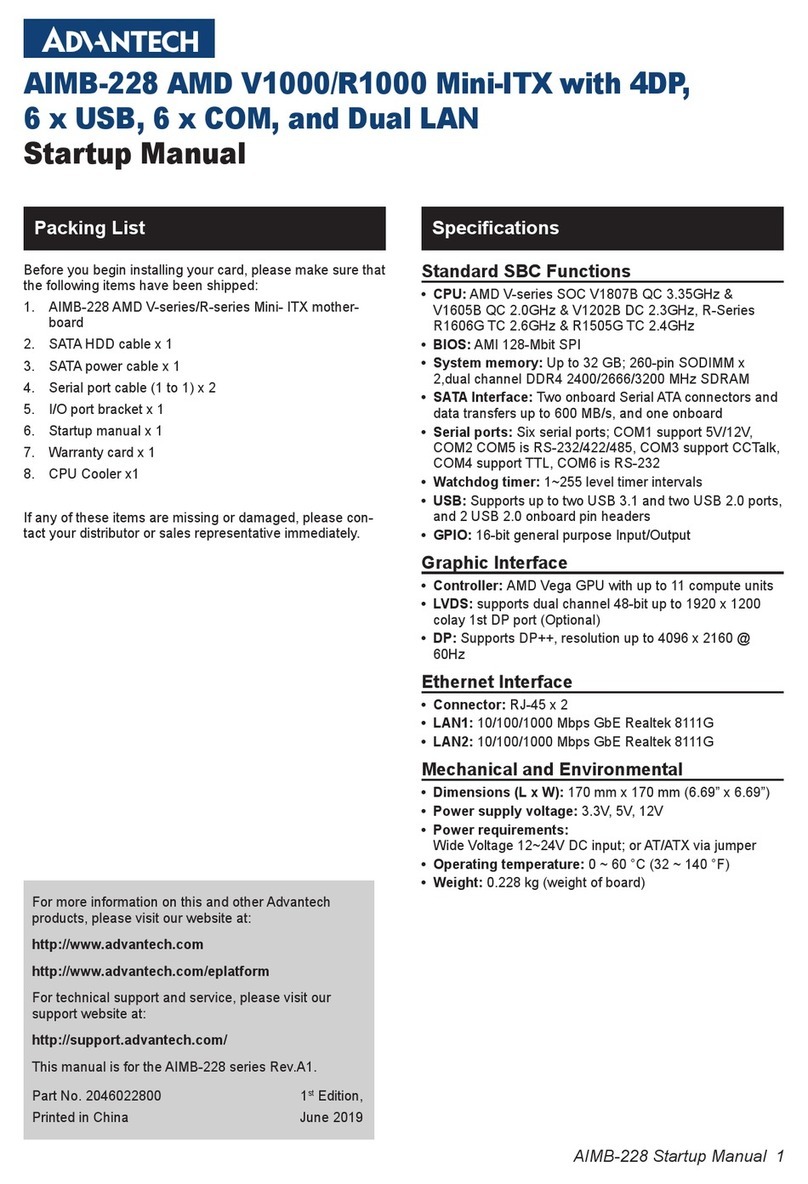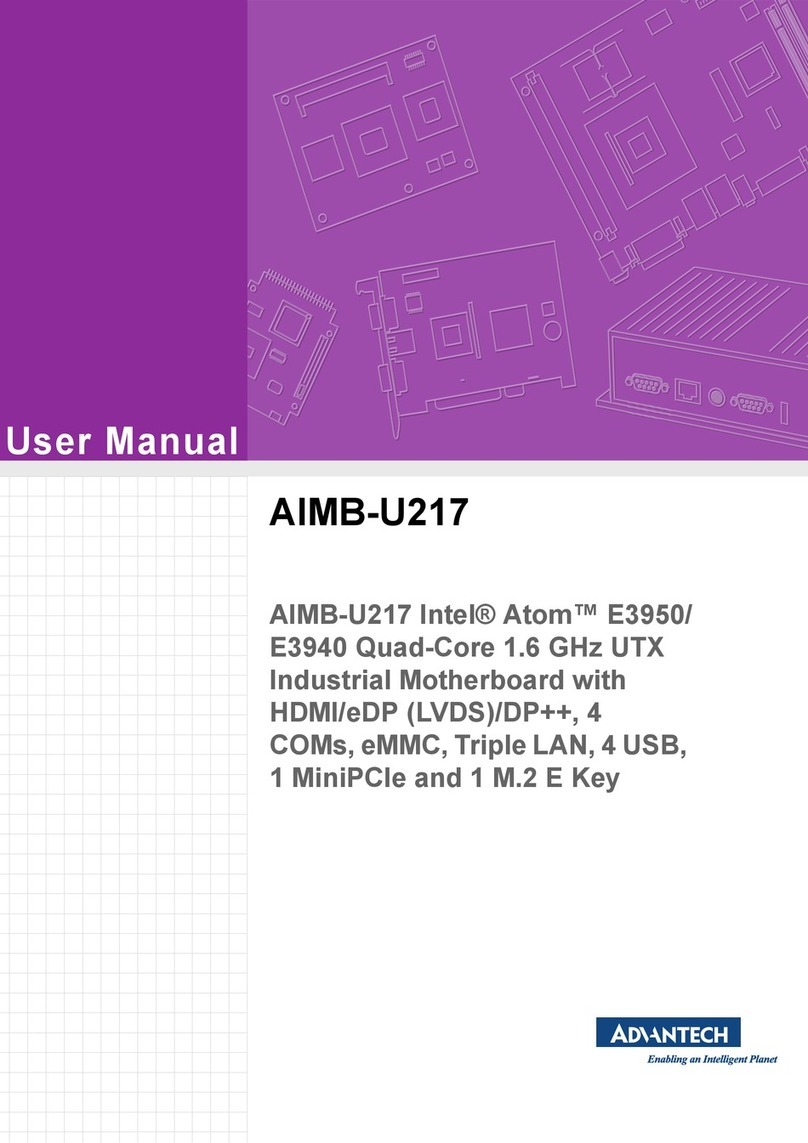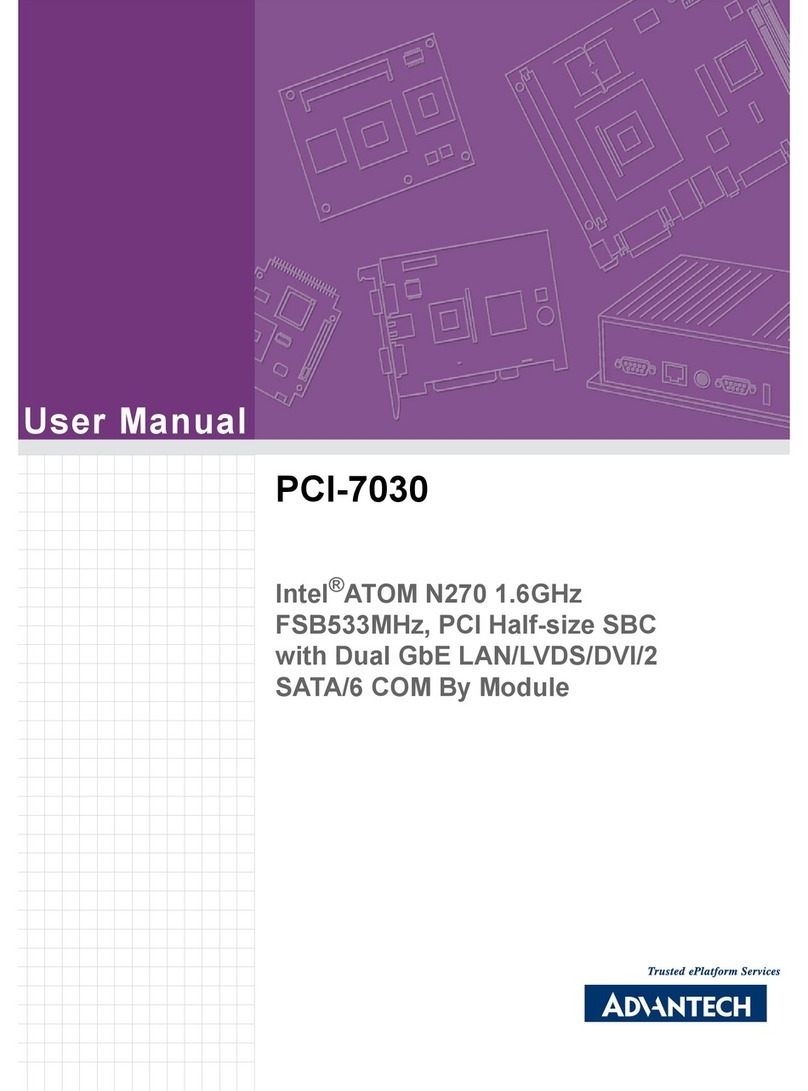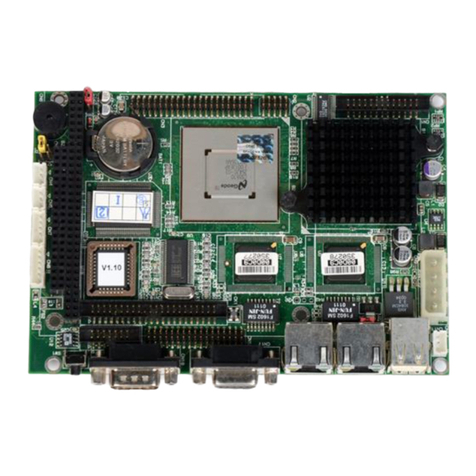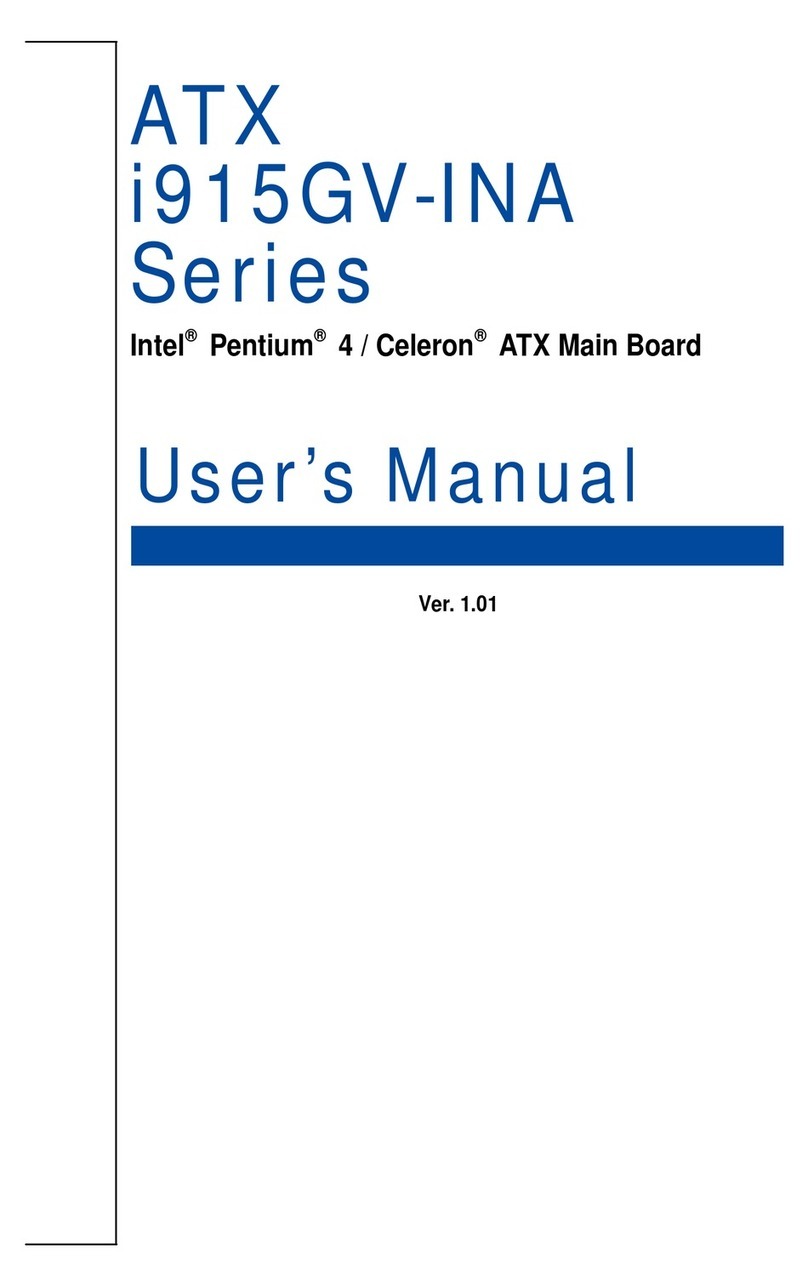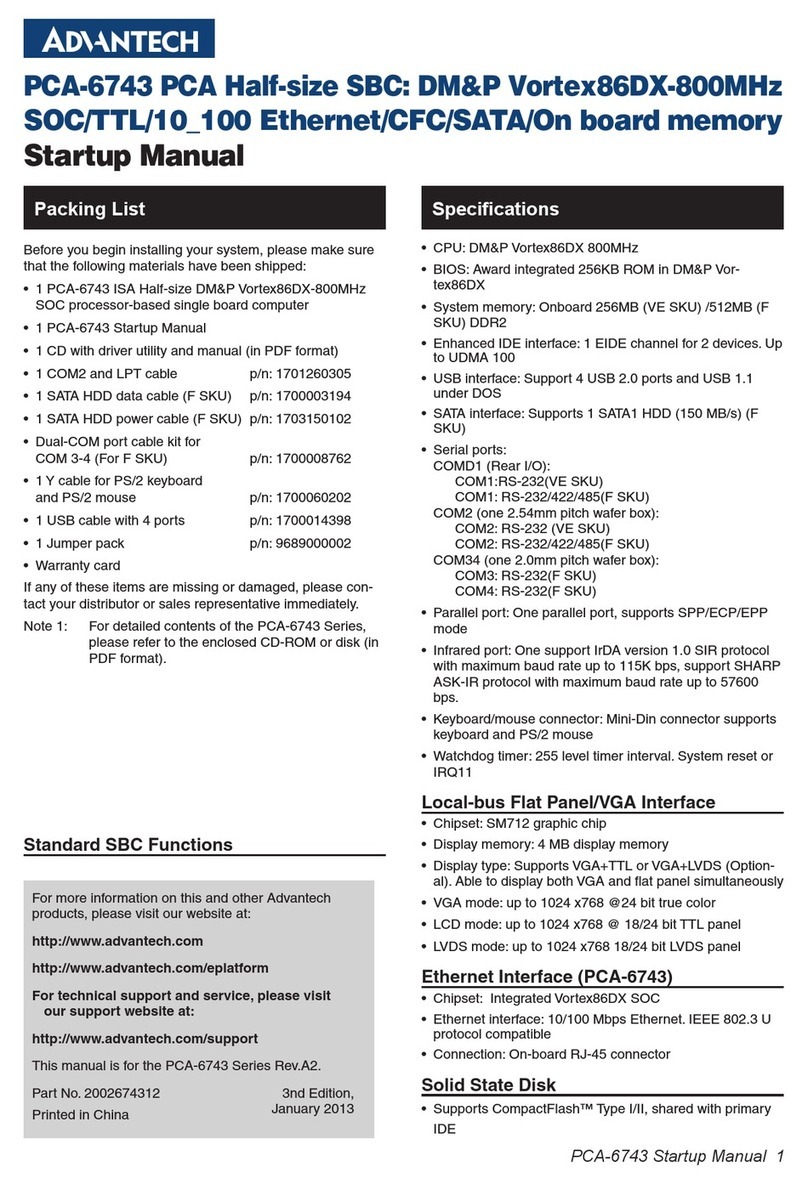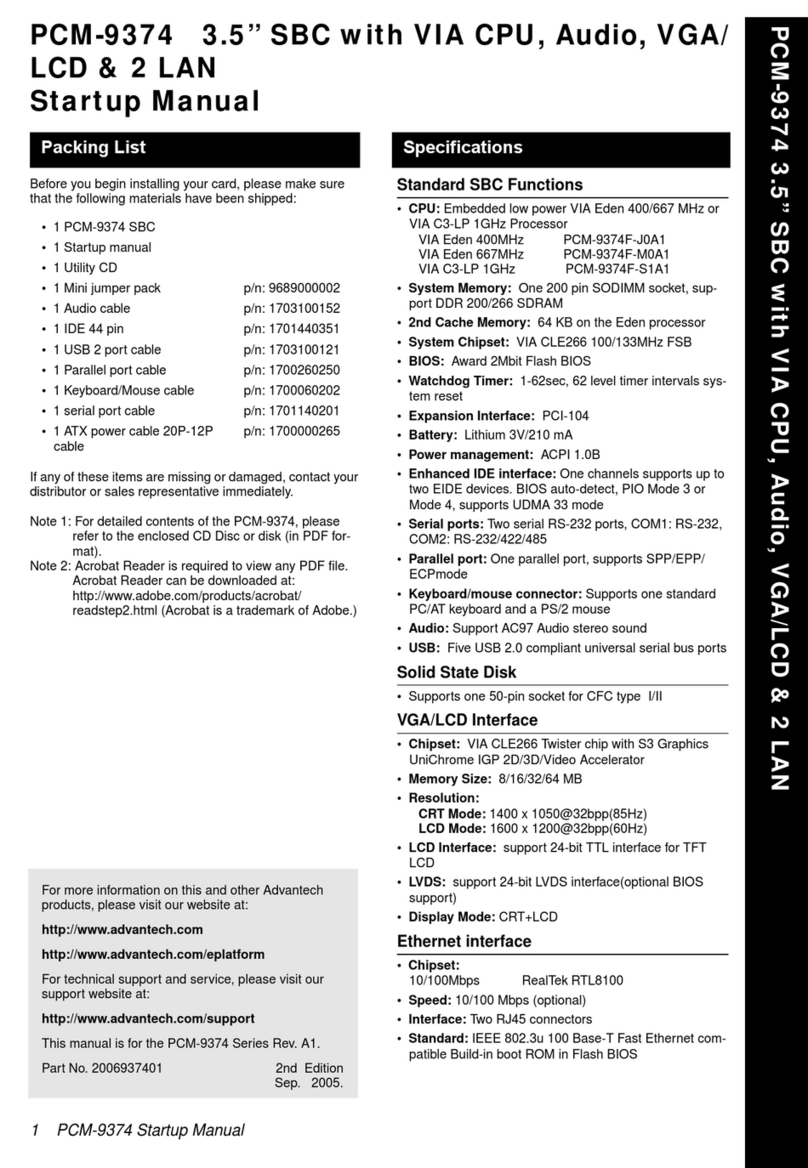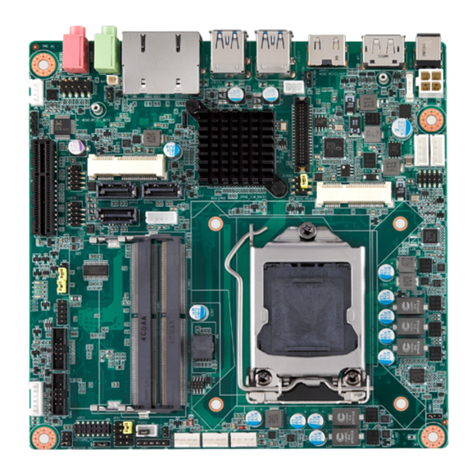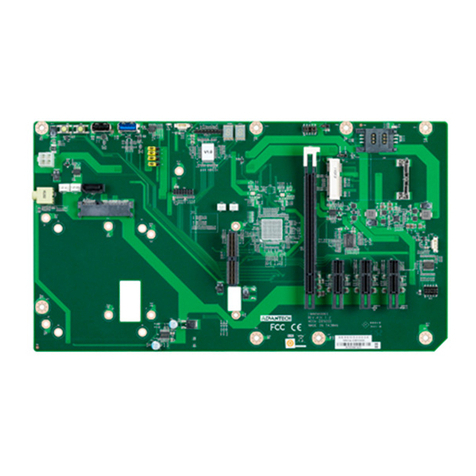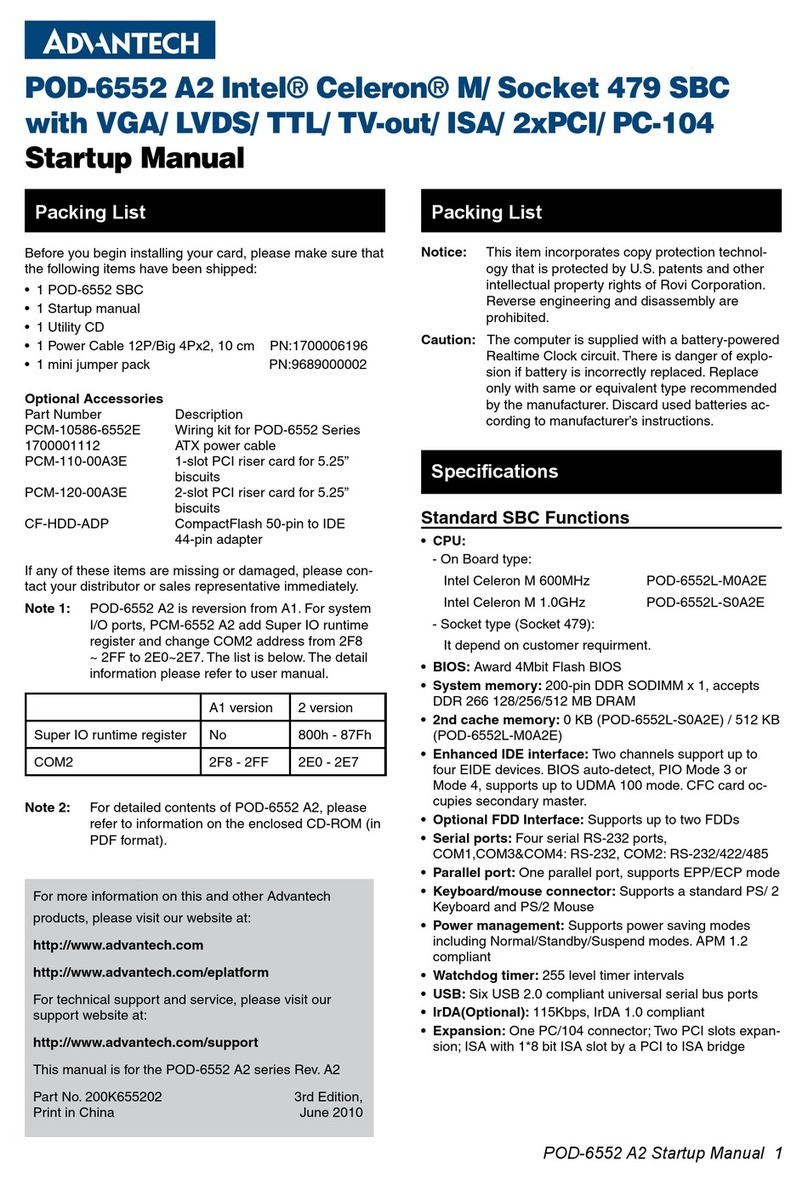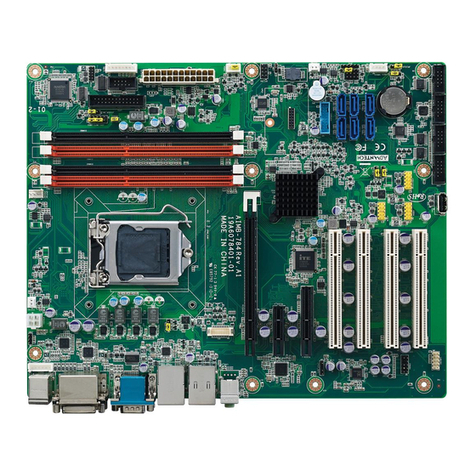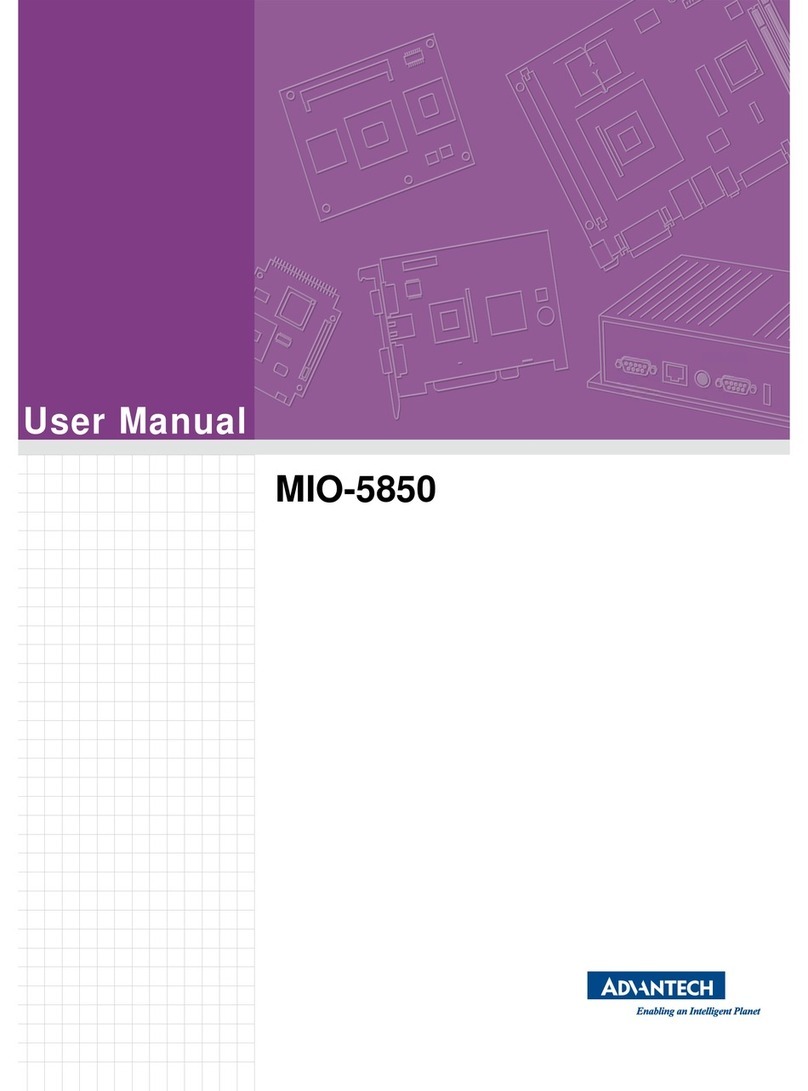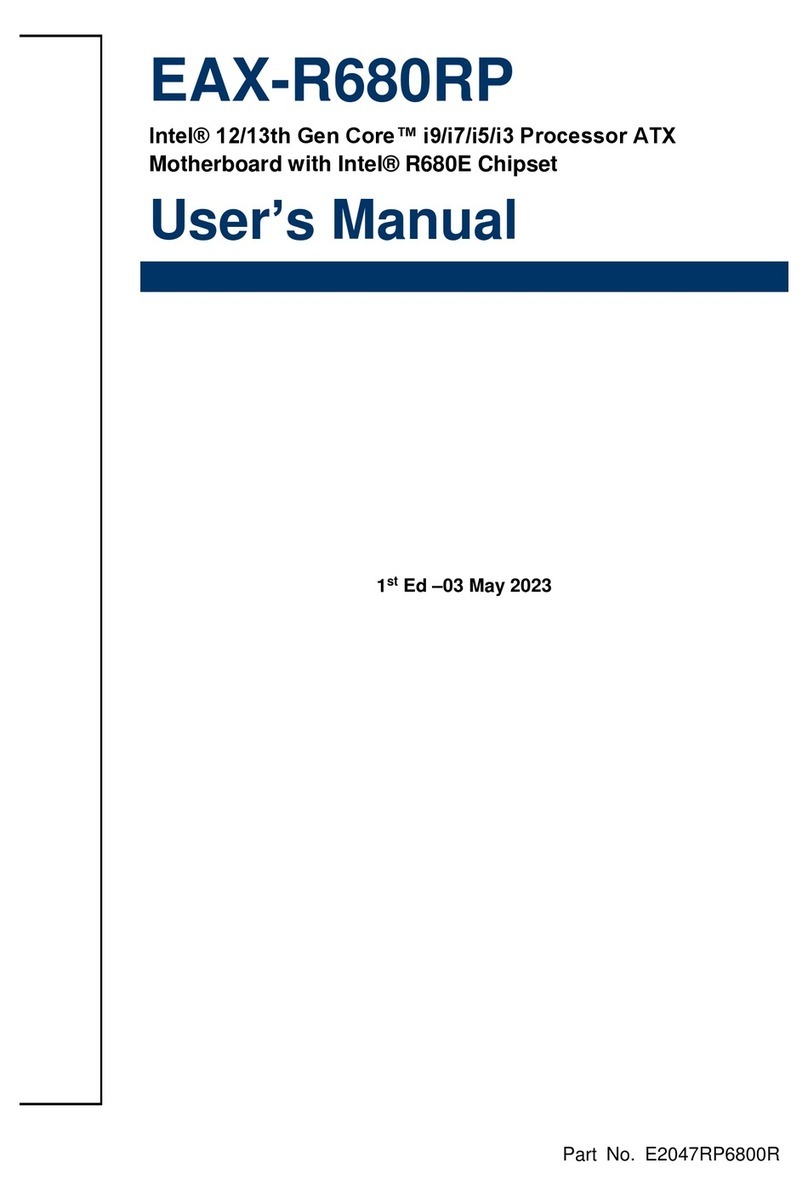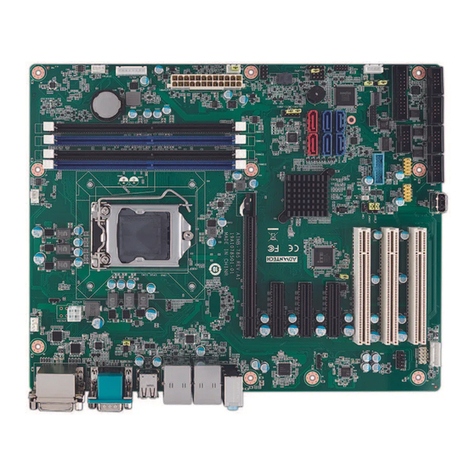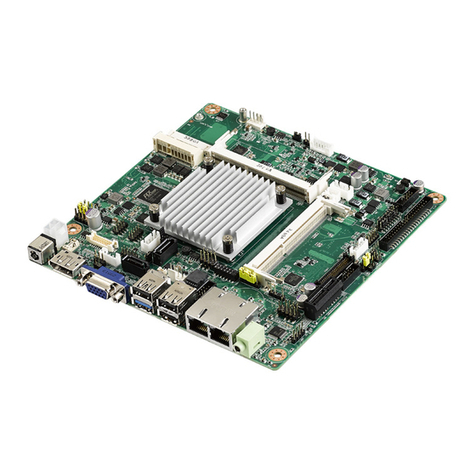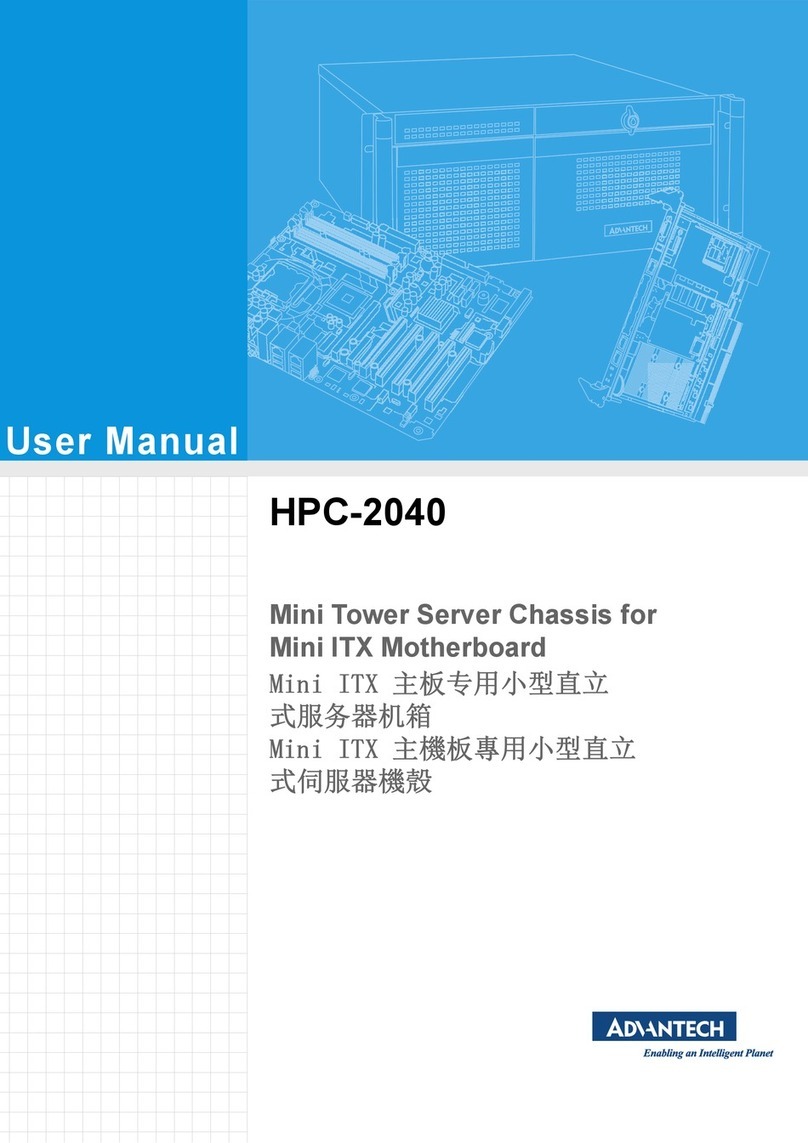
ROM-DB5901 User Manual x
Table 2.40:SPI_CN1 (SPI Pin Header) ...................................... 33
Table 2.41:SW2 (Reset Button) ................................................. 33
Table 2.42:SW4 (SLP Button) .................................................... 33
Table 2.43:SW5 (Power Button, CPU) ....................................... 34
Table 2.44:USB0_OTG1 (USB OTG)......................................... 34
Table 2.45:USB-4-5 (USB Port4 & Port5 Pin Header) ............... 34
2.4.4 Jumpers...................................................................................... 35
Table 2.46:CN2 (EDP0_HPD, Default (1-2)).............................. 35
Table 2.47:CN9 (SATA_DOM, Default (2-3)) ............................. 35
Table 2.48:CN10 (CANBus0, Default (1-2)) ............................... 35
Table 2.49:CN14 (CANBus1, Default (1-2)) ............................... 35
Table 2.50:CN17 (COM2_TERM1, Default (X)) ......................... 35
Table 2.51:CN19 (COM0_TERM1, Default (X)) ......................... 36
Table 2.52:CN27 (SER0, Default (1-2)) ..................................... 36
Table 2.53:CN28 (SER0, Default (1-2)) ..................................... 36
Table 2.54:CN29 (SER0, Default(1-2)) ...................................... 36
Table 2.55:CN30 (SER0, Default(1-2)) ...................................... 36
Table 2.56:CN36 (SDIO, Default (X))......................................... 37
Table 2.57:CN43 (SDIO, Default (2-3)) ...................................... 37
Table 2.58:CN44 (SDIO, Default (2-3)) ...................................... 37
Table 2.59:CN45 (SDIO, Default (2-3)) ...................................... 37
Table 2.60:CN46 (SDIO, Default (2-3)) ...................................... 37
Table 2.61:CN47 (SDIO, Default (2-3)) ...................................... 38
Table 2.62:CN48 (SDIO, Default (2-3) ....................................... 38
Table 2.63:GPIO_0 (GPIO0, Default (2-3)) ................................ 38
Table 2.64:GPIO_1 (GPIO1, Default (2-3)) ................................ 38
Table 2.65:GPIO_2 (GPIO2, Default (2-3)) ................................ 38
Table 2.66:GPIO_3 (GPIO3, Default (2-3)) ................................ 39
Table 2.67:GPIO_4 (GPIO4, Default (1-2)) ................................ 39
Table 2.68:GPIO_5 (GPIO5, Default(1-2)) ................................. 39
Table 2.69:GPIO_6 (GPIO6, Default (1-2)) ................................ 39
Table 2.70:GPIO_10 (GPIO10, Default(2-3)) ............................. 39
Table 2.71:LVDS0_BL (Default(1-2)) ......................................... 40
Table 2.72:LVDS0_VDD1 (Default(1-2)) .................................... 40
Table 2.73:LVDS0_VDD2 (Default(X))....................................... 40
Table 2.74:LVDS1_BL (Default(1-2)) ......................................... 40
Table 2.75:LVDS1_VDD0 (Default(1-2)) .................................... 40
Table 2.76:LVDS1_VDD1 (Default(X))....................................... 41
Table 2.77:CN35 (EDP1, Default (1-2)) ..................................... 41
2.4.5 Switches And Buttons................................................................. 41
Table 2.78:SW1 (Boot Selection for SMARC, SPI) .................... 41
Table 2.79:SW3 (LID Button) ..................................................... 41
Table 2.80:SW6 (COM2 SWITCH)............................................. 41
Table 2.81:SW7 (COM0 Switch) ................................................ 42
2.4.6 LEDs ........................................................................................... 42
2.4.7 Hardware Installation .................................................................. 43
Chapter 3 Advantech Services.......................... 45
3.1 RISC Design-in Services ........................................................................ 46
3.2 Contact Information................................................................................. 49
3.3 Technical Support and Assistance.......................................................... 50
3.4 Global Service Policy .............................................................................. 50
3.4.1 Warranty Policy........................................................................... 50
3.4.2 Warranty Period.......................................................................... 50
3.4.3 Repairs under Warranty.............................................................. 50
3.4.4 Exclusions from Warranty........................................................... 51
3.5 Repair Process ....................................................................................... 51
3.5.1 Obtaining an RMA Number......................................................... 51
